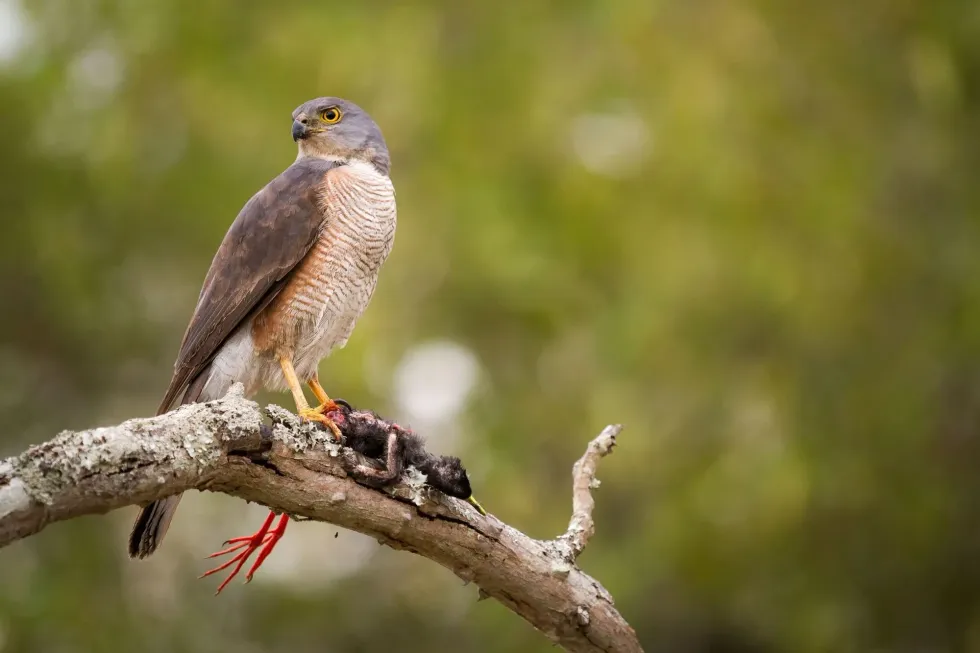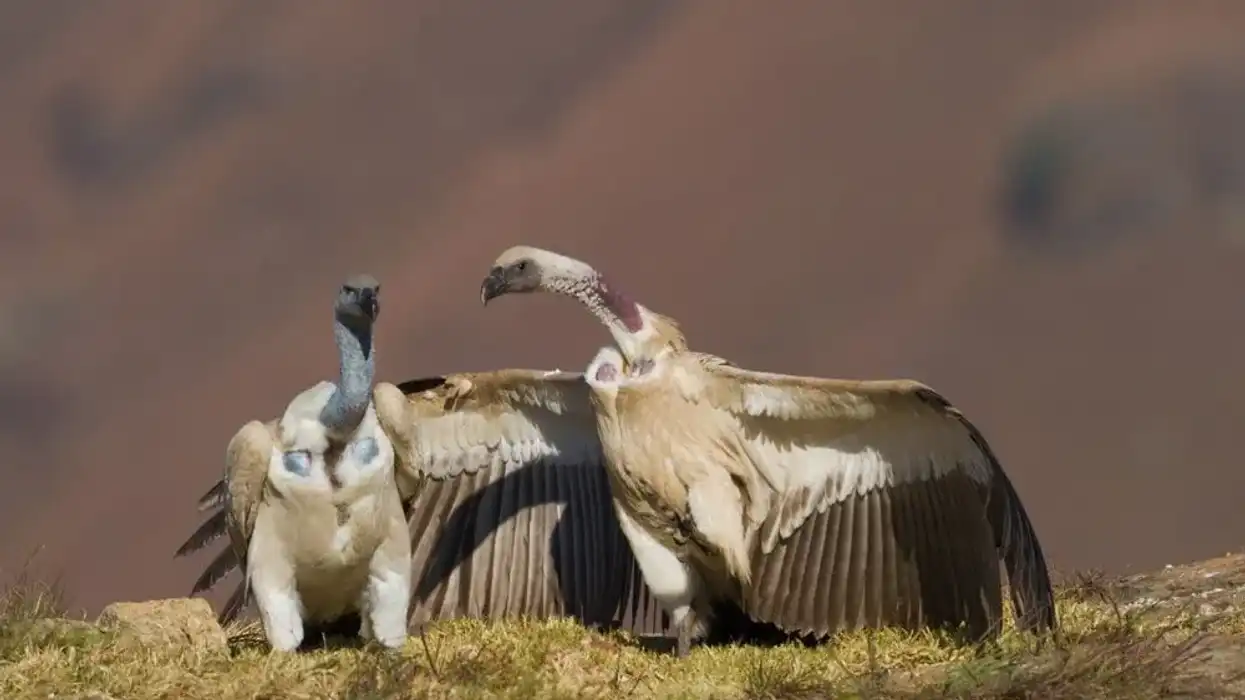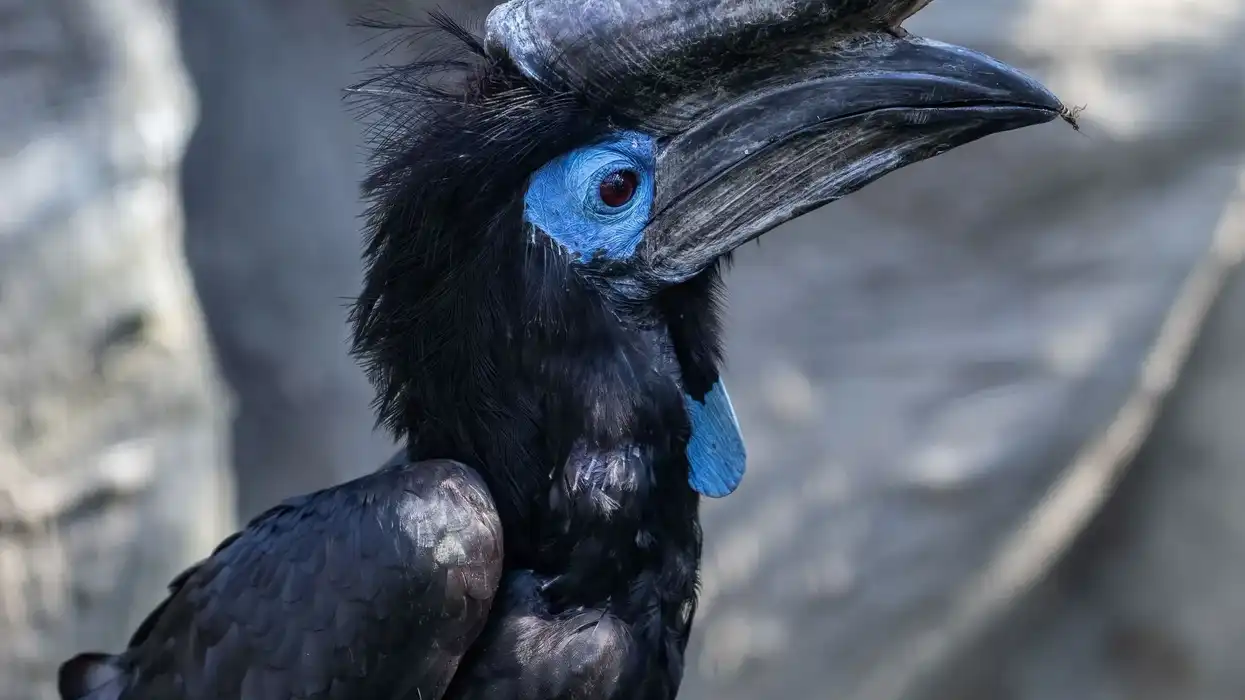The African Goshawk from the Accipitridae family, genus Accipiter is a raptor that is native to South Africa and adjacent places. The habitat of this species, owing to its predatory nature, consists of thick forests and woodlands, which gives these birds the opportunity to keep an eye on prey without being spotted.
The brown or pale blue-gray plumage of the species also adds to the reasons why it is hardly spotted in the wild, in spite of it being a common bird in Africa.
This regal looking bird species is averagely sized, and has short wings. It is with the help of these short wings that the African goshawk is able to circle over the forest cover as one of its morning rituals.
Apart from during the early morning hours, these birds are extremely quiet and give nothing away about their otherwise ferocious nature!
For more relatable content, check out these chicken hawk facts and common nighthawk facts for kids.
African Goshawk Interesting Facts
What type of animal is an African goshawk?
The African goshawk is a bird from the family of hawk family of Accipitridae.
What class of animal does an African goshawk belong to?
The scientific name for the class of animals that the African goshawk belongs to is that of Aves, although, in simple language, we may just as well classify them as birds!
How many African goshawks are there in the world?
Unfortunately, there are no studies that can tell us the exact population size of the African goshawk (Accipitridae family, genus Accipiter). This species from South Africa, although, is quite common and its conservation status suggests that the population is stable.
Where does an African goshawk live?
African goshawks prefer to live in thick forest areas and woodlands, simply because they prefer to search for prey whilst being camouflaged and hidden in the thick canopies of trees. This raptor species is common and yet, not commonly spotted mainly because of its habit of hiding in wooded forests.
What is an African goshawk habitat?
The African goshawk range of habitat is spread throughout South Africa. These birds are found in places south of the Sahara, in the central African Republic, southern Ethiopia and the southern Democratic Republic of Congo. Since it is one of the birds of the world that prefers tropical and subtropical climates, such places are best suited to the species.
Who does African goshawk live with?
Not much is known about the behavior pattern of African goshawks. Since they belong to a raptor family, it is assumed that they are not the kind of birds that would thrive in large flocks. They are usually seen as they take a flight alone, or in mated pairs.
How long does an African goshawk live?
While the exact lifespan of the African Goshawk species of birds is not known, the average lifespan of the family of goshawks is said to be of around seven years. The northern goshawk, on the other hand, can live to be of at least 11 years.
This gives us a rough estimate of the average lifespan of the African goshawks.
How do they reproduce?
This species of birds is not one of those that put particular emphasis on the building of a nest prior to the breeding season. These birds also do not indulge in any elaborate courting rituals as can be seen in certain other bird species.
A nest is made in whichever location seems suitable - mostly on the stump of trees, following which, the female African goshawk lays around one to three eggs. The eggs are incubated by both parents.
Once the nestlings hatch out of their eggs, the parents also share the responsibility of feeding them in the nest until they are able to catch their own prey.
What is their conservation status?
According to the IUCN Red List, the conservation status of the African goshawk is that of Least Concern.
This confirms that the population size of these hawk birds is stable and that their habitat in Western Cape of South Africa (north) and other parts such as the central African Republic is unlikely to face any rampant degradation in the near future.
There are no projections that would suggest that this raptor species would be threatened.
African Goshawk Fun Facts
What does the African goshawk look like?
There are a few features that define the African goshawk bird species quite appropriately and make their identification easy. The adult male bird has a pale blue-gray or brown upper body, and a white underside which has brown colored bars.
The female bird, on the other hand, is larger and has a completely brown upper body. The underside is the same as the male. The species is also characterized by its yellow colored feet and eyes, which create quite a beautiful contrast with the monotonous color palette of the rest of the body. Juveniles resemble the female bird.
How cute are they?
While it might not be a popular opinion, we do think that this species is one of the birds of the world that are more regal than adorable. Their perched stance and circling flight is very royal, so is their marked resemblance to larger members of the hawk family such as the ferruginous hawk.
How do they communicate?
The African goshawk call is hardly ever heard, mainly because of the fact that they are quiet when perched on trees in search of prey. They only let out a soft screeching sound while circling over forest canopies during the early hours of the morning.
Apart from this, other behavioral acts that can serve as means of communication within the same species are not known.
How big is an African goshawk?
The length of an average native goshawk from Africa is in the range of 15-17.7 in (38-45 cm). If you are wondering how the size of these birds would compare to other hawks, a sparrowhawk is only slightly smaller than this species.
How fast can an African goshawk fly?
While the exact flight speed of this species of birds is not known, they are understood to be great flyers since that is one of the virtues of such predatory birds!
How much does an African goshawk weigh?
The range of African goshawk weight is of around 7.7-12.7 oz (220-360 g) and an average sea eagle would weigh at least 10 times as much as one of these goshawks!
What are the male and female names of the species?
Since there are no distinct names for the male and female African goshawks, we have resorted to lovingly refer to them as the male African goshawks and the female African goshawks respectively!
What would you call a baby African goshawk?
A baby African goshawk would be called by the same name as all juveniles in the class of Aves - nestling, hatchling or chick!
What do they eat?
Goshawks are one of the fiercely carnivorous birds of the world. They feed any on mammals, lizards or insects that might attract them as they search from the upper branches of trees!
Are they dangerous?
While they may be dangerous towards small animals that they can ingest, African goshawks are not known to be of any trouble to humans. The fact that they spend most of their time in the forests of central or north Africa saves most of the human population from any chance that they may cause harm!
Would they make a good pet?
It is highly unlikely that domesticating an African Goshawk would prove to be a good idea. While the fact that they do not require a fancy nest might be one reason why they seem like a good option to have as a pet, their extensive diet is sure to be a nightmare to keep up with!
Did you know...
As parents, African goshawks are very nurturing. They take care of the eggs together and also share the responsibility of feeding the chicks once they have hatched out of the eggs.
Are goshawks dangerous?
Goshawks are not known to cause any harm to humans, although, it might be best to let them thrive in their own habitat. Interfering in the realm of predatory birds cannot be a good idea, can it?
How often do goshawks hunt?
Goshawks hunt once in around one to three days, depending upon the size of their last prey!
Here at Kidadl, we have carefully created lots of interesting family-friendly animal facts for everyone to discover! For more relatable content, check out these northern goshawk facts and harpy eagle facts pages.
You can even occupy yourself at home by coloring in one of our free printable African bird coloring pages.









